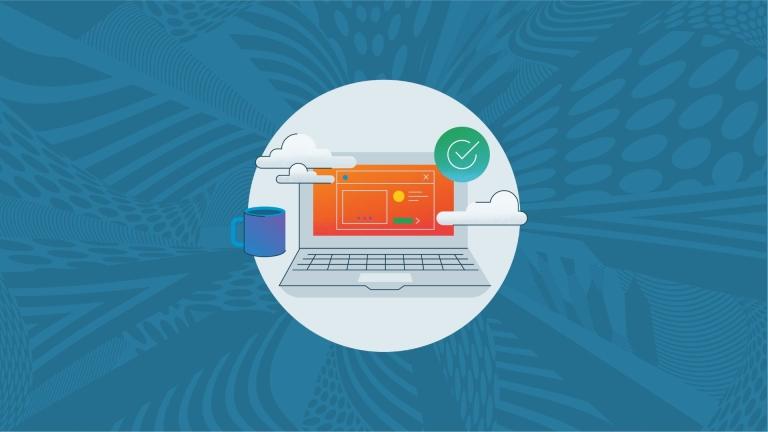
As schools and institutions adopt technology to evolve the learning experience, instruction must meet the needs of all students. At the core of effective teaching strategies, instructional design is the researched development of educational materials and methods to produce positive outcomes for learners. This structured approach organizes and manages the learning process to help students succeed. Implementing instructional principles allows educators to engage students with interactive lectures and lessons through valuable digital learning resources.
What is Instructional Design?
Instructional design (ID) is the systematic process of creating educational and training programs that lead to effective and efficient learning experiences. It involves the strategic creation and organization of content, assessments, interactions, and feedback mechanisms to foster effective and engaging learning experiences within technology. The main goal of instructional design is to make learning more effective, efficient, and engaging for learners.
At a glance, instructional design:

While there are various design models, every instructional design model should incorporate several key principles. Let’s dig in.
6 Key Principles of Instructional Design
Delivering instructional materials that are engaging, tech-integrated, and accessible can be challenging in an evolving academic landscape. With this goal in mind, the following key principles ensure that institutions and schools provide quality learning experiences.
Understand Learner Needs: Instructional designers implement the best strategies to address the learners' needs, tailoring content to optimize the learning experience. Adapt materials for K-12 and Higher Ed students, considering differences between base knowledge and objectives.
Identify Learning Objectives: Learning objectives set expectations for everyone involved in the learning process. Educators use objectives to guide instruction, placing specific, relevant, and measurable expectations. As a result, students are motivated to set their own learning goals and achieve personal outcomes.
Craft Learning Experiences: Implementing an effective strategy that benefits learners and increases material retention is at the core of instructional design. Educators use the Universal Design for Learning (UDL) framework to create positive learning experiences. UDL addresses educational barriers by giving students a voice in how they want to learn.
Design Usable Courses: Usability assesses students' ability to interact with and navigate a course. The course interface appeals to its target audience and supports the academic experience. With efficient course design, educators can spend less time on technical challenges and prioritize instruction.
Ensure Equitable Access: Equitable and inclusive courses allow all students to learn. Course features include functions for students with auditory, visual, motor, or cognitive impairments. Accessibility in design ensures educators can support elementary students with IEPs, ILPs, and 504 plans and college students with diverse needs.
Evaluate Student & Educator Performance: Assessment rates the effectiveness of the learning strategies, providing opportunities for students to understand where they are on their learning journey and for teachers to build rapport with their students and reflect on their efficacy. Both educator and student feedback identify course strengths and areas for improvement, producing better learning outcomes in the future.
3 Essential Instructional Design Models
Systematic educational models are guidelines based on learning theory and psychology that influence instructional design principles. Here are three popular models that can enhance course design and student learning.
Addie Model: The Addie is an acronym and non-linear model with five important instructional design pillars.
- Analysis: Define goals and objectives; identify the learner's prior knowledge
- Design: Consider user interface and experience to support navigation for educators and students
- Development: Collaboration between instructional designers and developers to make features functional
- Implementation: Integrate instructional strategy into the course material
- Evaluation: Use assessment data to gain insight into student progress
Bloom’s Taxonomy Model: Bloom’s framework highlights six categories of student understanding. Each type represents a student's stage in the learning process.
- Remember: Students can recall and define basic concepts through memorization
- Understand: Students can verbalize understanding of ideas and concepts
- Application: Students can implement learning material in out-of-classroom experiences
- Analysis: Students can organize ideas and concepts
- Evaluate: Students can develop a personal stance or critique of the learning material
- Create: Students can use the material to create something new or solve a problem
Merrill’s First Principles of Instruction: Merrill’s Model follows five principles of instruction. Each approach identifies ways for the learner to develop a deeper relationship with the material.
- Demonstration: Provide examples and effective presentation of learning material to help students absorb the content
- Application: Assign performance tasks allowing the student to problem solve and apply knowledge
- Integration: Provide a further step for students to apply their studies in a real-world context
- Activation: Build on students’ prior knowledge, allowing them to form connections
- Engage: Find ways to motivate learners as they connect with the material
Combining Technique with Tool: Instructional Design + LMS
Combining instructional design with a learning management system (LMS) can yield learning experiences that are intentional and impactful, whether in-person, hybrid, or entirely online. The right LMS provides intuitive tools and features to support teaching and elevate learning.
Technology is integral to the modern classroom, requiring learning content to evolve. Instructional designers should integrate adaptive and collaborative learning into their plans to improve the user experience. Instructional design within Canvas LMS provides users with the following:
- Adaptive Learning: Customize the learning experience, addressing unique student needs
- Collaborative Learning: Pair and group students, encouraging participation and active learning
- Multimedia Learning: Use media and digital tools to reinforce content and enhance the learning process
- Microlearning: Deliver content in small increments, making the material digestible for learners
- Mobile Learning: Support online learning, providing students accessibility and flexibility
- Gamification: Engage learners through game element implementation, increasing focus and motivation
Working Together: Instructional Design + Teachers
Instructional design and teaching are interdependent to ensure students receive a high-quality education. Educators adopt instructional strategies and implement techniques in the classroom. Instructional designers generally have experience with or background in the subject matter and are often former teachers. By adopting instructional design principles, teachers can make applications for the courses and offer feedback for further ideation. Instructional designers and teachers both:
- Set Learning Objectives
- Design Curriculum
- Create Learning Materials
- Develop Effective Assessments
- Integrate Technology
Set up for Success: Instructional Design + Learners
Learners benefit from evidence-based coursework, a usable course interface, and an effective instructional strategy. With strong course design and robust educator delivery, students are fully immersed in the learning experience, increasing outcomes for success. How effective instructional design benefits students:
- Develops personal learning goals based on objectives
- Provides a healthy balance of consistency and flexibility in coursework
- Offers accessible features to benefit personal learning needs
- Facilitates timely and personal feedback on performance
- Increases opportunities for growth & achievement

Design and Educate with Digital Learning Tools
Explore creating enhanced course content, providing effective digital learning strategies, and teaching with the best tools. Learn more about adopting tech in the K12 classroom and choosing the best software for college student success.
Related Content
 Teaching-With-Tech-10-Benefits.jpg
Teaching-With-Tech-10-Benefits.jpgBlogs
 canvas_x_tg_logo_lockup_780_x_520.png
canvas_x_tg_logo_lockup_780_x_520.pngBlogs
 roi-lms-business.jpg
roi-lms-business.jpgBlogs
